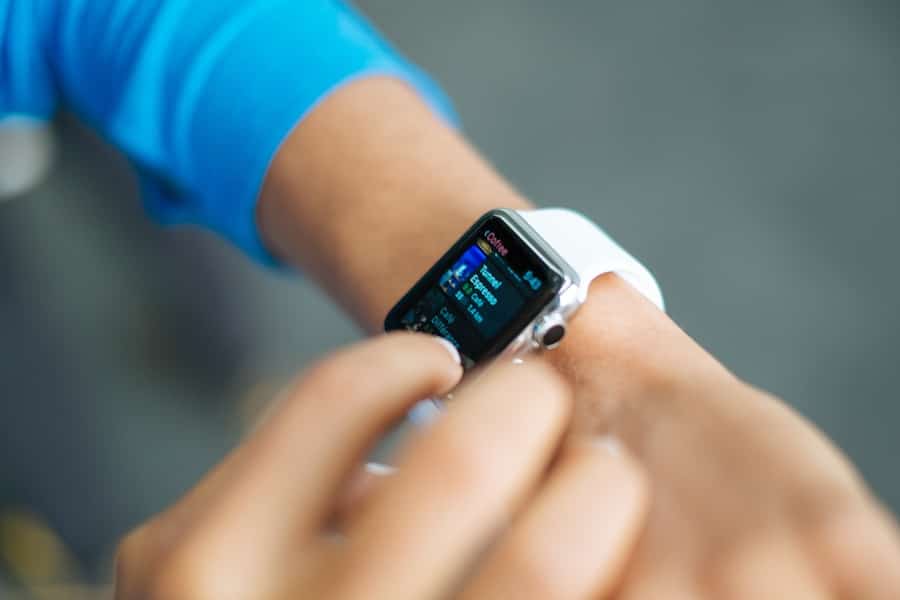The advent of artificial intelligence (AI) has revolutionized numerous sectors, and healthcare is no exception. Among the most promising applications of AI in healthcare is the development of wearables designed for continuous blood pressure monitoring. These devices, which can be worn comfortably on the wrist or arm, leverage advanced algorithms and machine learning techniques to provide real-time insights into an individual’s cardiovascular health.
Unlike traditional blood pressure monitors that require periodic measurements, AI wearables offer a continuous stream of data, enabling users to track fluctuations in their blood pressure throughout the day. The significance of continuous blood pressure monitoring cannot be overstated, particularly in the context of hypertension management. Hypertension, often dubbed the “silent killer,” affects millions globally and is a leading risk factor for heart disease and stroke.
Traditional methods of monitoring blood pressure can be cumbersome and may not capture the full picture of an individual’s health status. AI wearables address this gap by providing a more comprehensive view of blood pressure trends, allowing for timely interventions and better-informed healthcare decisions.
Key Takeaways
- AI wearables offer continuous blood pressure monitoring, providing real-time data for better health management.
- Advancements in AI technology have improved the accuracy and reliability of blood pressure monitoring, leading to more precise results.
- Continuous blood pressure monitoring with AI wearables can help in early detection of hypertension and other cardiovascular issues.
- Challenges and limitations of AI wearables include accuracy issues, data privacy concerns, and the need for further validation and regulation.
- The future of AI wearables in healthcare includes integration with other health monitoring systems and personalized medicine, revolutionizing preventive healthcare.
Advancements in AI Technology for Blood Pressure Monitoring
Recent advancements in AI technology have revolutionized the field of blood pressure monitoring wearables.
Enhanced Accuracy and Reliability
Machine learning algorithms, particularly those based on deep learning, have improved the accuracy and reliability of these devices. By analyzing vast datasets that include various physiological parameters, these algorithms can identify patterns and anomalies that may indicate potential health issues.
Actionable Insights through AI Analysis
For instance, AI can discern the subtle changes in blood pressure that occur in response to stress, physical activity, or dietary choices, providing users with actionable insights.
A Multifaceted Approach to Cardiovascular Health
The integration of sensor technology has played a crucial role in the evolution of AI wearables. Modern devices often incorporate photoplethysmography (PPG) sensors, which measure blood volume changes in the microvascular bed of tissue. This non-invasive method allows for continuous monitoring without the discomfort associated with traditional cuff-based systems. Coupled with AI algorithms, these sensors can deliver accurate blood pressure readings while also assessing other vital signs such as heart rate and oxygen saturation. This multifaceted approach not only enhances the user experience but also provides a more holistic view of cardiovascular health.
Benefits of Continuous Blood Pressure Monitoring with AI Wearables

The benefits of continuous blood pressure monitoring through AI wearables are manifold. One of the most significant advantages is the ability to detect hypertension early and manage it proactively. Traditional monitoring methods often lead to sporadic data collection, which can miss critical spikes or drops in blood pressure.
Continuous monitoring allows individuals to observe their blood pressure trends over time, facilitating early intervention when necessary. For example, a user may notice a consistent rise in their readings during stressful periods, prompting them to adopt stress-reduction techniques or consult a healthcare professional. Additionally, AI wearables empower users with personalized health insights.
By analyzing individual data patterns, these devices can offer tailored recommendations for lifestyle changes, such as dietary adjustments or exercise regimens. This personalized approach not only enhances user engagement but also fosters a sense of ownership over one’s health. Furthermore, many AI wearables are equipped with mobile applications that allow users to visualize their data trends and share them with healthcare providers, promoting collaborative care and informed decision-making.
Challenges and Limitations of AI Wearables for Blood Pressure Monitoring
Despite their numerous advantages, AI wearables for blood pressure monitoring face several challenges and limitations. One primary concern is the accuracy and reliability of the readings obtained from these devices. While advancements in technology have improved measurement precision, factors such as user movement, skin tone, and environmental conditions can still affect results.
For instance, a user engaging in vigorous physical activity may experience fluctuations in blood pressure that could lead to misleading readings if not properly accounted for by the device’s algorithms. Another significant challenge is the integration of these wearables into existing healthcare systems. While many individuals are eager to adopt new technologies for health monitoring, healthcare providers may be hesitant to rely solely on data from consumer-grade devices.
The lack of standardized protocols for data interpretation and management can create barriers to effective communication between patients and providers. Additionally, there are concerns regarding data security and privacy, as sensitive health information collected by these devices must be protected from unauthorized access.
Future Applications and Integration of AI Wearables in Healthcare
The future applications of AI wearables in healthcare extend far beyond blood pressure monitoring alone. As technology continues to evolve, we can anticipate a more integrated approach to health management that encompasses various physiological parameters. For instance, future wearables may combine blood pressure monitoring with glucose tracking for individuals with diabetes or integrate heart rate variability assessments to provide a comprehensive view of cardiovascular health.
Moreover, the potential for AI wearables to facilitate remote patient monitoring is immense. As telehealth becomes increasingly prevalent, these devices can serve as vital tools for healthcare providers to monitor patients’ conditions from afar. This capability is particularly beneficial for individuals with chronic conditions who require regular monitoring but may have difficulty accessing traditional healthcare settings.
Ethical and Privacy Considerations for AI Wearables in Blood Pressure Monitoring

Data Security and User Consent
The collection and storage of sensitive health information raise concerns about data security and user consent. It is essential for manufacturers to implement robust security measures to protect user data from breaches or unauthorized access.
Maintaining User Trust and Accessibility
Additionally, clear communication regarding how data will be used and shared is crucial to maintaining user trust. Furthermore, there is an ethical imperative to ensure that these technologies are accessible to diverse populations. Disparities in access to technology can exacerbate existing health inequalities, particularly among marginalized communities who may benefit most from continuous monitoring solutions.
Collaborative Efforts to Address Disparities
Policymakers and healthcare providers must work collaboratively to address these disparities and ensure that AI wearables are available to all individuals, regardless of socioeconomic status.
The Role of AI Wearables in Personalized Medicine and Preventive Healthcare
AI wearables are poised to play a transformative role in personalized medicine and preventive healthcare strategies. By continuously monitoring vital signs such as blood pressure, these devices can provide insights that enable tailored interventions based on individual health profiles. For example, an individual with a family history of hypertension may receive alerts when their readings approach concerning levels, prompting them to take preventive measures before developing more serious health issues.
In addition to individual-level interventions, aggregated data from AI wearables can contribute to broader public health initiatives. Researchers can analyze trends across populations to identify risk factors associated with hypertension and develop targeted prevention programs. This data-driven approach not only enhances our understanding of cardiovascular health but also informs policy decisions aimed at improving community health outcomes.
The Impact of AI Wearables on the Future of Blood Pressure Monitoring
The impact of AI wearables on the future of blood pressure monitoring is profound and far-reaching. As technology continues to advance, these devices will likely become integral components of routine healthcare practices, enabling continuous monitoring and personalized interventions that were previously unimaginable. The ability to track blood pressure trends in real-time empowers individuals to take charge of their health while providing healthcare providers with valuable insights for informed decision-making.
As we look ahead, it is essential to address the challenges associated with accuracy, integration into healthcare systems, and ethical considerations surrounding data privacy. By fostering collaboration between technology developers, healthcare providers, and policymakers, we can harness the full potential of AI wearables to improve cardiovascular health outcomes for individuals worldwide. The journey toward a future where continuous blood pressure monitoring becomes standard practice is well underway, promising a new era of proactive healthcare that prioritizes prevention and personalized care.
For more information on the latest advancements in wearable technology, check out The Best Smartwatch Apps of 2023. This article explores the top apps available for smartwatches, showcasing how technology continues to evolve and enhance our daily lives. As AI wearables for continuous blood pressure monitoring become more prevalent, it’s important to stay informed on the latest trends and innovations in the industry.
FAQs
What are AI wearables for continuous blood pressure monitoring?
AI wearables for continuous blood pressure monitoring are devices that use artificial intelligence and advanced sensors to continuously monitor a person’s blood pressure throughout the day. These wearables provide real-time data and insights into a person’s blood pressure trends and fluctuations.
How do AI wearables for continuous blood pressure monitoring work?
AI wearables for continuous blood pressure monitoring typically use optical sensors to measure blood pressure by analyzing the changes in blood volume in the blood vessels. The data collected by the sensors is then processed using artificial intelligence algorithms to provide accurate and continuous blood pressure readings.
What are the benefits of AI wearables for continuous blood pressure monitoring?
AI wearables for continuous blood pressure monitoring offer several benefits, including the ability to track blood pressure trends over time, provide early detection of potential health issues, and offer personalized insights for better management of blood pressure. These wearables also enable users to monitor their blood pressure in real time, leading to proactive health management.
Are AI wearables for continuous blood pressure monitoring accurate?
AI wearables for continuous blood pressure monitoring have shown promising accuracy in clinical studies and real-world usage. However, it’s important to note that the accuracy of these devices can vary based on factors such as proper usage, device calibration, and individual differences in physiology.
What is the future outlook for AI wearables for continuous blood pressure monitoring?
The future of AI wearables for continuous blood pressure monitoring looks promising, with ongoing advancements in sensor technology, artificial intelligence algorithms, and data analytics. These advancements are expected to further improve the accuracy, reliability, and usability of AI wearables for continuous blood pressure monitoring, making them an integral part of proactive healthcare management.

